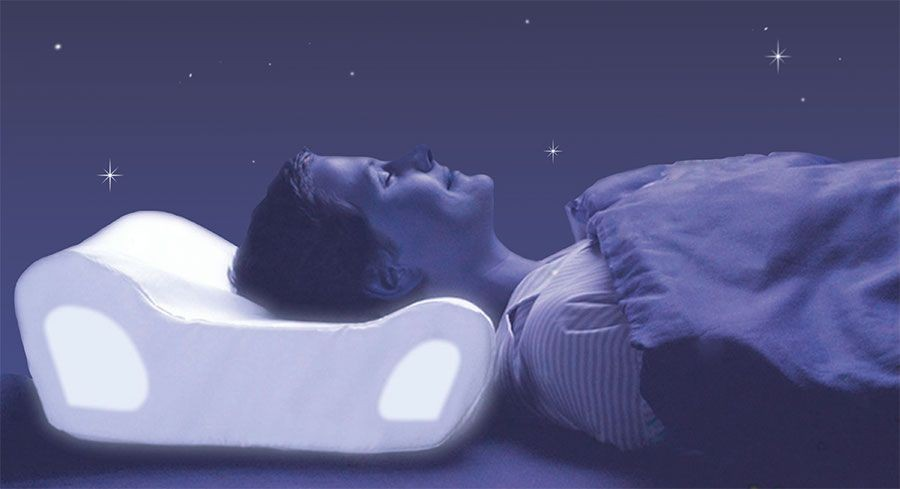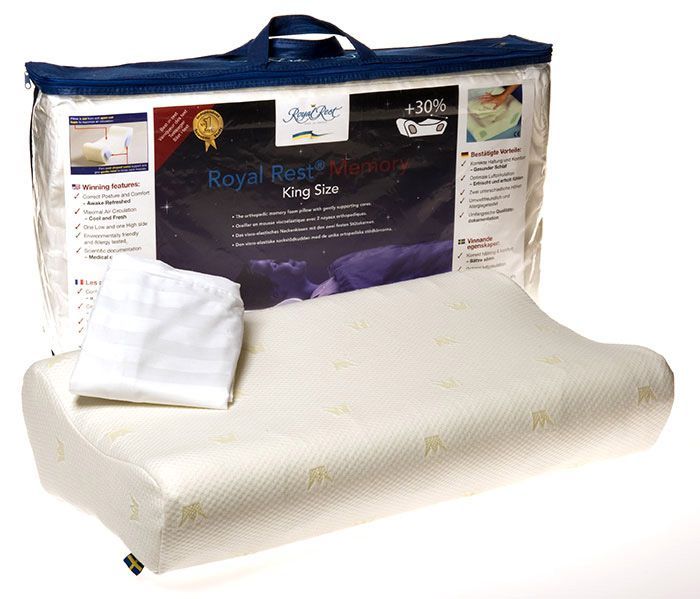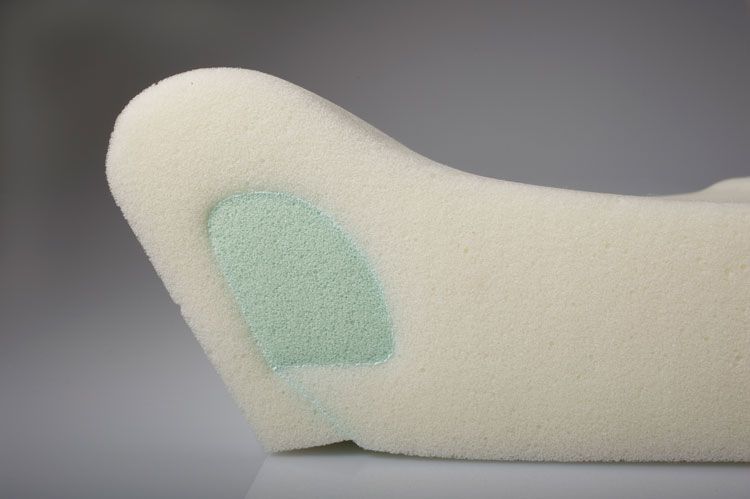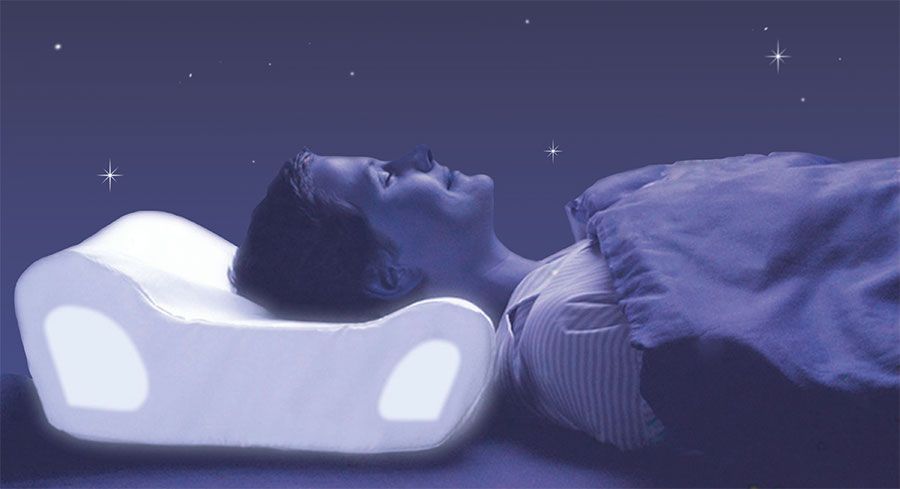Memory Foam vs Latex: The Ultimate Battle of Orthopaedic Pillows!
Choosing the right pillow can make or break your night's sleep, especially if you're grappling with orthopaedic issues. Memory foam and latex have emerged as leading contenders in the quest for the perfect pillow, each offering unique benefits tailored for those seeking superior support and comfort. With back pain, neck stiffness, and restlessness becoming all too common, understanding the intricacies of these materials could be your ticket to a restful night. But which one truly takes the crown in the ultimate battle of orthopaedic pillows?
Benefits of Memory Foam Pillows
Memory foam pillows have gained popularity for their unparalleled ability to mould to the shape of your head and neck. This personalised support is a godsend for individuals with orthopaedic issues, as it provides the precise cushioning needed for a restful night's sleep. The feel of memory foam is distinct; it embraces your contours, offering a cradle-like effect that many find irresistibly comforting.
One of the standout benefits of memory foam is its capacity to relieve pressure points. For those suffering from conditions like arthritis or chronic neck pain, this feature can significantly improve sleep quality. Unlike traditional pillows, a foam pillow distributes weight evenly, reducing the strain on sensitive areas. This attribute makes memory foam a favourite among those in search of orthopaedic relief.
Another advantage is the dense material's ability to minimise motion transfer. If you share a bed, you know how disruptive a partner's movements can be. With memory foam, these disturbances are greatly reduced, ensuring you enjoy a peaceful night's sleep. Furthermore, memory foam offers excellent support for spinal alignment, promoting better posture and alleviating the risk of waking up with aches and pains.
For allergy sufferers, the hypoallergenic properties of memory foam are a major draw. Dust mites and allergens are less likely to thrive in this material, making it a suitable choice for those prone to allergies. In essence, the benefits of memory foam extend beyond just comfort, offering a healthier sleeping environment.
Benefits of Latex Pillows
Latex pillows have carved a niche for themselves by delivering consistent support and retaining their shape over time. Unlike memory foam, which softens with body heat, latex provides a uniformly firm surface that many sleepers prefer. This reliable support can be crucial for maintaining proper spinal alignment and reducing neck strain.
Natural latex, derived from rubber trees, boasts impressive hygiene benefits. It resists dust mites and mould, creating a cleaner sleep environment. This makes latex foam pillows an attractive option for those concerned about allergens and the overall healthiness of their sleep space. The natural latex pillows not only offer support but also peace of mind regarding cleanliness.
The breathable structure of latex is another feather in its cap. Sleepers often find that latex pillows offer a cooler experience compared to memory foam. This is due to the material's inherent ability to allow air circulation, preventing heat build-up. For those who tend to sleep hot, a latex foam layer might be just what you need for a sweat-free night.
Latex pillows are celebrated for their bouncy and responsive feel. This characteristic provides a lively surface that many find comfortable and supportive. Unlike the sinking sensation you get with memory foam, latex offers a springier experience, which some individuals prefer, particularly for neck support.
The durability of latex makes it a wise investment for those seeking long-lasting orthopaedic support. While the initial cost may be higher, the lasting quality and resilience of latex often justify the expense. In the battle of memory foam vs latex, longevity is a significant factor to consider.
Support and Comfort Comparison
When it comes to support and comfort, memory foam and latex each bring distinct qualities to the table. Memory foam offers a customised fit that adapts to your individual shape, providing a personalised cocoon of support. This contouring property can be incredibly comforting for some sleepers who crave that snug embrace.
On the flip side, latex pillows provide uniform support that remains consistent regardless of body heat. This firmness is cherished by those who prefer a stable surface that doesn’t change throughout the night. Whether you’re a back sleeper or side sleeper, the comfort offered by latex can be a game-changer in achieving proper posture support.
Latex pillows maintain their firmness, whereas memory foam tends to soften with body heat. This characteristic means that latex might be more suitable for those who prefer a firmer feel. However, the contouring nature of memory foam can be more comforting for some sleepers, offering a gentle cradle that eases them into slumber.
Both materials excel in supporting spinal alignment, yet personal preference often dictates which is more comfortable. Some people favour the springier feel of latex for neck support, while others appreciate the enveloping sensation of memory foam. Ultimately, your comfort and support needs will guide you in selecting the right material.
Durability of Memory Foam vs Latex Pillows
When it comes to durability, latex pillows generally take the lead due to their resilient nature. This longevity is one of the primary reasons many opt for latex despite its higher price point. The material maintains its shape without sagging, even after years of use, making it a dependable choice for lasting orthopaedic support.
Memory foam, while offering many benefits, can degrade over time, especially with exposure to heat and moisture. This degradation may mean more frequent replacements to maintain optimal support. However, with proper care, a high-quality memory foam pillow can still provide years of comfort.
The lasting quality of latex justifies its typically higher initial cost. Investing in a latex pillow may seem more expensive upfront, but its longevity often results in cost savings in the long run. Its ability to withstand wear and tear makes it a favourite among those seeking a durable, long-lasting solution.
In contrast, memory foam may require more frequent replacement. Over time, the foam can lose its shape and supportive properties, necessitating a new pillow to ensure continued comfort and support. If durability is a top priority, latex might be the better choice for you.
Suitability for Side Sleepers
Side sleepers often face unique challenges in finding the right pillow, but both memory foam and latex have something to offer. Memory foam pillows cradle the head, reducing strain on the neck, which is crucial for side sleepers. The adaptive nature of memory foam allows it to conform to the side sleeper's shape, providing support where it’s needed most.
Latex offers firm support to keep the spine aligned during side sleeping. This is essential for preventing aches and ensuring a comfortable night's rest. The bounce and responsiveness of latex are particularly appreciated by side sleepers, as they help support the shoulders and prevent discomfort.
The thickness of memory foam can be adjusted to suit individual needs, making it a versatile choice for side sleepers. Whether you prefer a thick, plush pillow or something more moderate, memory foam can be tailored to meet your requirements. This adaptability is a significant advantage for side sleepers who often need specific support levels.
Side sleepers often appreciate the responsiveness of latex for shoulder support. This material's ability to spring back into shape quickly means it can provide consistent support throughout the night. Both memory foam and latex can alleviate pressure on the shoulders and hips, which is a common concern for side sleepers.
Similarities between Memory Foam and Latex Pillows
Despite their differences, memory foam and latex pillows share several similarities that make them both excellent choices for orthopaedic support. Both materials offer excellent support for spinal alignment, ensuring you maintain proper posture as you sleep. This is crucial for avoiding morning stiffness and pain.
Each material offers hypoallergenic properties, reducing allergy triggers and making them suitable for sensitive sleepers. Whether you choose memory foam or latex, you can enjoy a cleaner, healthier sleep environment, free from dust mites and allergens.
Both options cater to various sleep positions, enhancing overall sleep quality. Whether you’re a back, side, or stomach sleeper, you’ll find a pillow in either material that suits your needs. This versatility makes them popular choices for those seeking a tailored sleep experience.
The durability of both types makes them popular choices for orthopaedic support. While latex generally has the edge in longevity, high-quality memory foam can also provide several years of reliable support. This lasting quality is a key factor for those investing in their sleep health.
Memory foam and latex are available in various firmness levels to suit preferences. Whether you crave something soft and enveloping or firm and supportive, both materials offer options to match your comfort needs. This range of choices ensures you find the perfect pillow for your sleep style.
Differences between Memory Foam and
Latex Pillows
The differences between memory foam and latex pillows are as significant as their similarities. Memory foam moulds to body heat, offering a customised fit that some sleepers find comforting. In contrast, latex remains consistently firm, providing reliable support regardless of temperature changes.
Latex tends to be more breathable, offering a cooler sleep environment. If you tend to sleep hot, this could be a deciding factor in choosing between the two materials. The open-cell structure of latex allows for better air circulation, preventing heat build-up during the night.
Memory foam has a denser feel, which some people prefer for its contouring properties. Latex, on the other hand, provides a bouncier experience that some find more comfortable and supportive. This difference in feel can greatly influence your choice depending on your personal comfort preferences.
Latex is derived from natural sources, while memory foam is synthetic. This distinction may influence your decision if you prefer natural materials or are concerned about environmental impact. The natural properties of latex often come with a higher price point, reflecting its longevity and sustainable sourcing.
In the battle of latex vs memory foam, the price point is a key consideration. Latex generally costs more due to its natural properties and durability, while memory foam tends to be more budget-friendly. Your choice will depend on whether you prioritise cost or longevity in your purchase decision.
Choosing the Best Pillow for Orthopaedic Support
Choosing the best pillow for orthopaedic support involves considering several factors, starting with your sleep position. If you’re a side sleeper, memory foam might offer the cradling support you need, while back or stomach sleepers might prefer the consistent firmness of latex.
Consider any allergies you may have when selecting between these materials. Both memory foam and latex offer hypoallergenic properties, but natural latex might provide an extra level of allergen resistance. This consideration is crucial for maintaining a healthy sleep environment.
Assess the level of firmness you find most comfortable for neck and spine support. Memory foam offers a softer, more adaptive feel, while latex provides firm, consistent support. Your personal comfort preference should guide your choice in this orthopaedic pillow battle.
Weigh the longevity and cost of each option to make an informed decision. Latex generally lasts longer, making it a cost-effective investment over time, despite its higher initial cost. Memory foam, while offering many benefits, may require more frequent replacement.
Remember, when selecting between memory foam and latex pillows, consider your sleeping style, support needs, and personal preferences for the best night's sleep and orthopaedic support. Your perfect pillow awaits, ready to provide the comfort and support you deserve.
In summary, both memory foam and latex pillows have their unique advantages and drawbacks. Memory foam offers contouring comfort and pressure relief, while latex provides consistent support and durability. Ultimately, the choice boils down to your personal needs and preferences. So, which pillow will you choose to transform your sleep experience?
Frequently Asked Questions
What is the difference between memory foam and latex pillows?
Memory foam pillows are made of polyurethane foam that molds to the shape of your head and neck, providing support and comfort. Latex pillows, on the other hand, are made from natural latex rubber and offer a more responsive and bouncy feel.
Are memory foam pillows hot to sleep on compared to latex pillows?
Memory foam pillows can retain heat and feel warmer compared to latex pillows, which are known for their breathability and cooling properties. If you tend to sleep hot, a latex pillow might be a better choice for you.
How long do memory foam and latex pillows last?
Memory foam pillows typically last around 3-4 years, while latex pillows can last up to 5-7 years. Proper care and maintenance, such as regular fluffing and cleaning, can help extend the lifespan of both types of pillows.
Can memory foam and latex pillows be washed?
Memory foam pillows should not be washed as it can damage the foam. Instead, spot clean with a damp cloth and mild detergent. Latex pillows, on the other hand, can be hand-washed with mild soap and water, but make sure to thoroughly dry them before use.




QUICK LINKS
All Rights Reserved | Devon Medical UK Limited T/A Healthy Posture | Company Number 13716748


